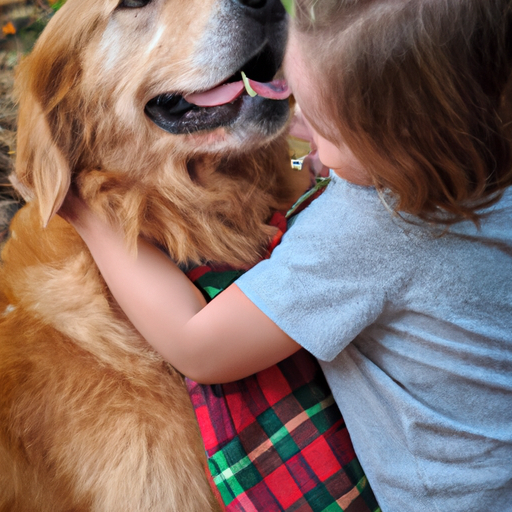As dog lovers, we often find ourselves hugging our furry friends. It’s a natural gesture for us humans, but have you ever wondered if your dog actually understands what a hug is? This article delves into the fascinating world of canine cognition and emotion to answer this question.
Table of Contents
- Understanding Canine Emotions
- The Science Behind Dogs and Hugs
- Dogs’ Body Language and Hugs
- How to Properly Hug a Dog
- FAQs
Key Takeaways
- Dogs don’t naturally understand the concept of hugs as humans do.
- Some dogs may perceive hugs as a threat or dominance display.
- Understanding your dog’s body language is crucial to know if they are comfortable with hugs.
- Not all dogs dislike hugs; some may even enjoy them, depending on their socialization and personality.
Understanding Canine Emotions
Dogs, much like humans, are capable of experiencing a wide range of emotions. However, their understanding and expression of these emotions are different from ours. Stanley Coren, a well-known psychologist and dog behavior expert, explains that while dogs are highly emotional creatures, they express their feelings through body language and vocalizations, not through physical gestures like hugging.
The Science Behind Dogs and Hugs
Research suggests that dogs might not naturally understand the concept of hugging. Instead, they might perceive it as a dominance display or a threat. This is because in the canine world, putting a limb over another dog is a sign of dominance. So, when we hug our dogs, they may feel trapped or threatened.
However, this doesn’t mean all dogs dislike being hugged. According to Dr. Marc Bekoff, some dogs might enjoy it, depending on their individual personality, upbringing, and socialization.
Dogs’ Body Language and Hugs
Understanding your dog’s body language is crucial to knowing whether they’re comfortable with hugs. Signs that your dog might not enjoy being hugged include:
- Turning their head away from you
- Stiffening their body
- Showing the whites of their eyes (whale eye)
- Lip licking or yawning
- Trying to move away
On the other hand, if your dog leans into you, wags their tail, or relaxes their body, they might be one of the few dogs who enjoy a good hug.
How to Properly Hug a Dog
If your dog enjoys hugs, here’s how you can hug them in a way that they’ll feel comfortable:
- Approach your dog calmly and gently.
- Use a soft voice to reassure them.
- Avoid hugging them too tightly; let them move away if they want to.
- Be aware of their body language and stop if they show any signs of discomfort.
Remember, each dog is unique, and what works for one might not work for another. For more on understanding your dog’s behavior and emotions, check out this article.
FAQs
Do dogs understand hugs?
Most dogs don’t naturally understand the concept of a hug as humans do. They might perceive it as a sign of dominance or threat. However, some dogs, depending on their individual personality and socialization, might enjoy being hugged.
How can I tell if my dog likes being hugged?
Pay attention to your dog’s body language. Signs of discomfort include turning their head away, stiffening their body, showing the whites of their eyes, lip licking or yawning, and trying to move away. Signs of comfort include leaning into you, wagging their tail, and relaxing their body.
How should I hug my dog?
Approach your dog calmly and gently, use a soft voice, avoid hugging too tightly, and always be mindful of their body language.
Are there alternatives to hugging a dog?
Yes! Dogs often enjoy petting, belly rubs, and gentle stroking. You can also show affection through play, training, or simply spending quality time together. For more ideas on how to bond with your dog, check out this article.
Can hugging a dog be harmful?
If a dog feels threatened by a hug, they might react defensively, leading to potential harm. Always respect your dog’s personal space and read their body language to ensure they’re comfortable. For tips on keeping your dog safe and happy, visit this page.
The world of canine cognition and emotion is complex, and understanding it can greatly enrich the bond between you and your furry friend. So, the next time you feel the urge to hug your dog, remember to consider their perspective and respond to their comfort level. After all, the best way to show our dogs love is by respecting their needs and boundaries.



